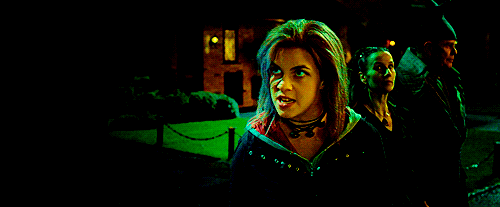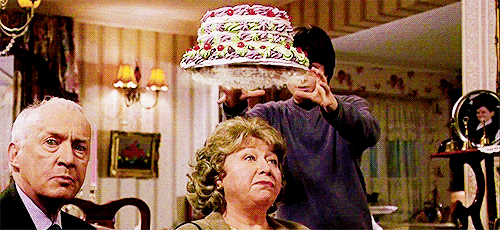A Comprehensive and Confusing Breakdown of “The Trace”
The clearest explanation that the Harry Potter series gives us of the Trace probably comes on page 368 of Harry Potter and the Half-Blood Prince, when Harry and Dumbledore are discussing the memory they’ve just watched. It came from the mind of Morfin Gaunt; sitting, dank and alone, in his decaying family home, he’s visited by a 16-year-old Voldemort. Morfin’s memory goes black – it turns out that Voldemort has Stunned him before taking his wand and using it to murder the Riddles.
So Harry asks the natural question: Voldemort wasn’t 17 yet, so why couldn’t the Ministry tell that he used magic outside of school?
“They can detect magic, but not the perpetrator,” Dumbledore says. Then, soon after: “They rely on witch and wizard parents to enforce their offspring’s obedience within their walls.”
It’s superficially simple: The Trace covers the Muggle world, but not wizarding households. Except it can’t be that simple. We know that from Order of the Phoenix, when the Order pays Harry a visit at Number 4, Privet Drive, unquestionably a Muggle home. Tonks uses all sorts of spells to pack Harry’s bag and clean his room – and yet Harry doesn’t hear a peep from the Ministry about underage magic, even though the Ministry would undoubtedly love another crime to pin on him.
We know from Dobby dropping the pudding in Chamber of Secrets that just because it wasn’t actually Harry doing the magic doesn’t mean the Trace won’t detect it as coming from Harry. Previously, the Trace has treated out-of-school magic near Harry as coming from Harry. But when Tonks is there, suddenly, it doesn’t.
How do we reconcile the two scenes? The answer involves proximity. Number 4, Privet Drive isn’t a wizarding home, so the Trace should apply to it – but it doesn’t, it seems, when there’s an of-age wizard in the house.
Breaking It Down
Here, as far as I can make out, is how the Trace system must work.
Somewhere at the Ministry, there’s a contraption that detects all magic around underage wizards. That’s a lot of processing power, but what with magic, they can probably handle it. Say it detects magic – a Levitation Charm, for instance – near a 13-year-old wizard.
Here’s where it gets interesting. We know from the scenes above that if the magic comes either within a wizarding household or from a nearby witch or wizard, the Trace doesn’t detect it. From Dumbledore, we also know that the Trace can’t detect the perpetrator. So the Trace senses the Levitation Charm around the 13-year-old and snaps into action. It activates a sort of proximity sensor, scanning the area around the 13-year-old to determine whether there’s a wizard nearby or if the child is within a wizarding home.
If either is true, nothing happens; the machine tosses out the blip and just moves on. It can all happen instantaneously: Levitation Charm detected, let’s check, wizarding parents nearby lifting a box, no violation, who’s up next? But if neither is true, that’s when there’s a problem – and when the machine prints out a letter bearing the relevant information, then sends it to Mafalda Hopkirk’s desk for signature.
Importantly, it seems that this device is a black box: Ministry officials either can’t or don’t watch the data in real-time, and it’s all anonymized. If it weren’t, it would amount to the Ministry being able to track all wizards all the time everywhere, which they clearly can’t do. It seems also that the Trace tracks wands, not actual bodies; that’s how 16-year-old Voldemort managed to kill the Riddles using Morfin’s wand without the Trace noticing. It’s a two-step process, detecting the magic, then scanning for alternative perpetrators: the Ministry, due either to the Trace’s design or a prescient statute, can’t access the internal workings of the machine, but simply enforces the results once the machine spits them out.
So imagine it’s a warm summer evening in 1995. You’re sitting at the Ministry monitoring this black-box magic detector, and all of a sudden, it clangs to life, grinding and whirring before spitting out a letter: “Dear Mr. Potter, we have received intelligence that you performed the Patronus Charm at twenty-three minutes past nine…”
All you have to do is bring the letter to Mafalda for a signature and some light editing. You don’t get to dig into the surveillance records or scan any area yourself to see who is where; all the action has already happened. The machine sensed magic. It activated its scanner: no wizarding household, no other spell-casting wizard nearby. Harry Potter was the only one in the area. Must have been him.
It’s not the most elegant system, to be sure. They should definitely come up with a better one. But in a world where the Minister gets to appoint the school disciplinarian, it’s roughly par for the course.



